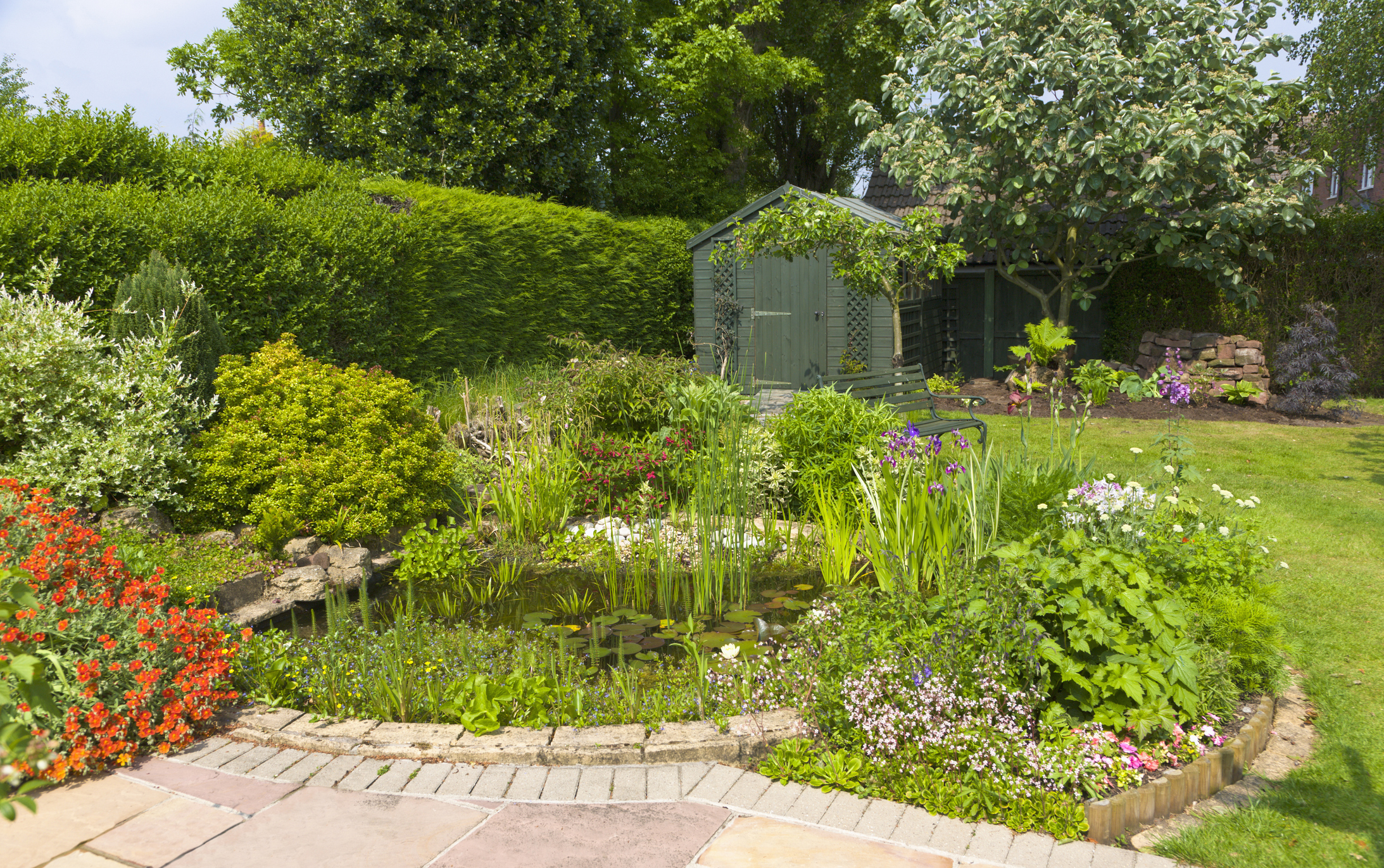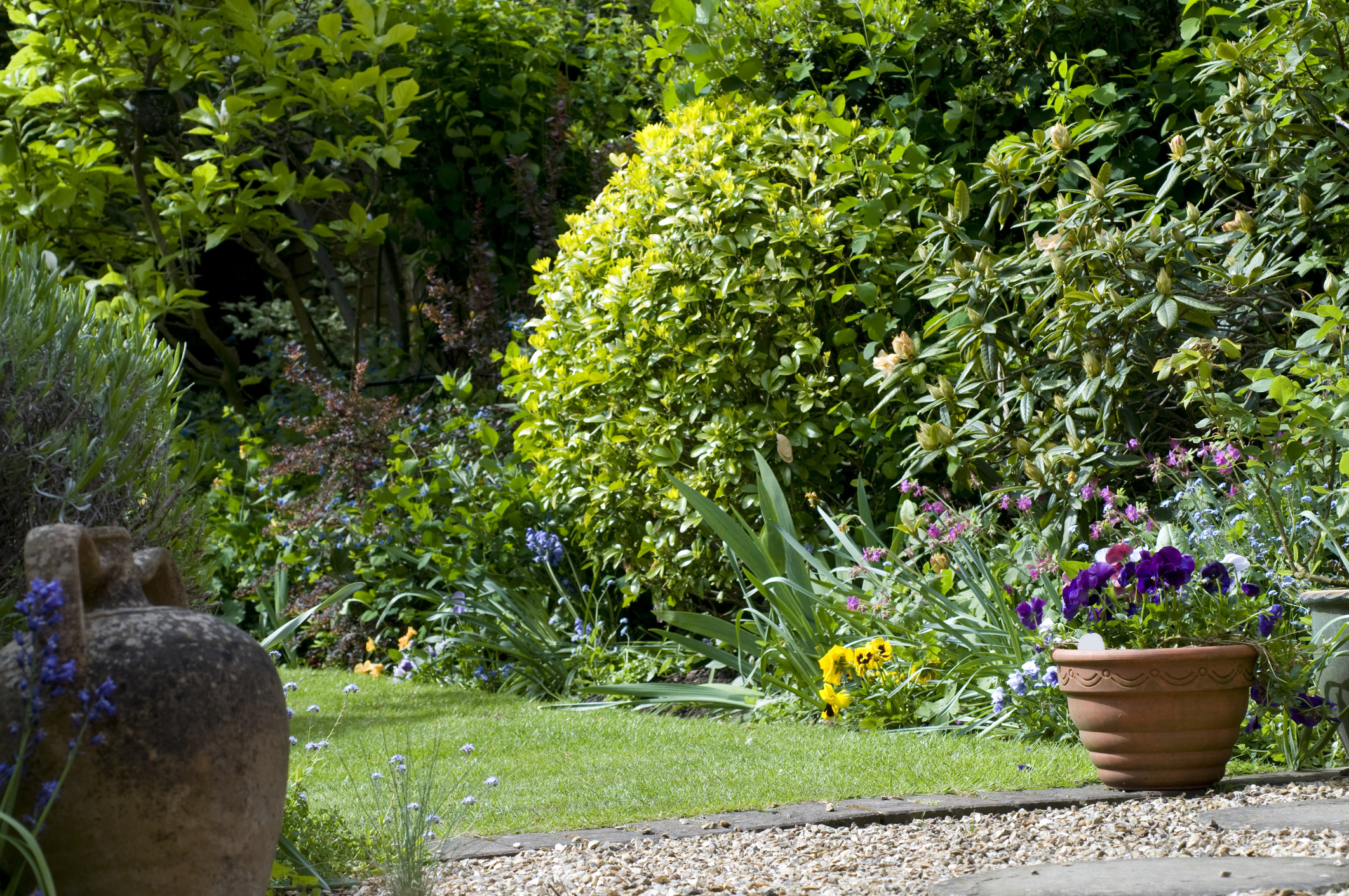10 Ways to Get Your Garden Summer-Ready
These expert tips for maintenance and new planting will help you make the most of spring and ensure your garden looks its very best during the summer months

Gardening is always about being ahead of the game. For example, if you want amazing winter colour, then you need to plan ahead and plant the autumn before.
If this fills you with a sudden dread for the coming summer, then relax. Spring is the ideal time to plan and implement renovations, make hard landscaping changes and redesign borders - or plan for a new garden if you're building a new home.
It's also a great time to plant and split existing plants to create maximum 'wow' for the summer months.
If you're not sure where to start with your garden this spring, try following this 10-step checklist to help your garden look its best this summer.
1. Create a Snagging List for Your Garden
Like our homes, our gardens sometimes become a case of 'that's just how is', so your first step in spring is to become objective.
Imagine it's someone else's garden and make a list of all those irritating jobs that you have been living with for too long: the gate that has dropped on its hinges, the bench that would look amazing freshly painted, oiled or cleaned.
Look for loose paving stones, irregular or shallow steps that make navigating the garden with bags of compost or the lawnmower unnecessarily hard work; the shed which, with a facelift, could become a useful storage space and an attractive feature in the garden.
These jobs could be tackled over a weekend and transform your feelings for your garden.
(MORE: How To Get Your Garden Guest-Ready)
2. Plan Plant Additions and Removals
Any time spent in the garden can be used to mentally note what plants would be better moved.
These mental wanders are a useful tool for planning or repurposing the garden. While considering what to change in terms of additions, it's also a good opportunity to look at what doesn't work in terms of removals.
(MORE: 5 Plants to Add Height to Your Flowerbeds This Summer)

3. Inspect Trees and Large Shrubs
Make a note of any large shrubs or trees: do they need a prune or the canopy thinning? Are the limbs (big branches) healthy? Any sign of fungal growth or weakened branches could be a cause for concern.
With large trees, don't be tempted to try and remove branches yourself. It's a skilled job removing limbs that weigh in excess of a tonne, so call in a professional for peace of mind.
4. Plot Out Changes to Borders
In existing gardens, use an old hose to imagine physically any widening or for change the shape of borders or access routes.
It's an easy way, on a 1:1 scale, of seeing if ideas on paper or in your head work in the actual space.

5. Tackle Hard Landscaping Changes During Spring
The spring months are great for hard landscaping, so cast your critical eye over retaining walling, guttering and steps too. Without creating a site swamped in winter mud, you can widen paths, extend terraces or re-gravel the drive with ease.
6. Clean Up Garden Furniture and Decking
With some brighter, warmer days ahead, now is the perfect time to revive garden furniture and decking that has suffered over the winter months.
Soapy water and a brush should be adequate enough to bring grimy wooden furniture back to life. Take this time to re-oil timber furniture to help it survive another season.
For a quick way to tackle the decking, time to break out the pressure washer. Put it o its lowest setting and leave some distance between the nozzle and the decking boards — if not, you may strip the decking's stain or paint away and cause the timber (in the case of wooden decking) to become brittle.
(MORE: How to Clean a Patio)
7. Take Time Out From Your Build to Green Your Space
If you are involved in a large-scale project, either renovating a house or taking on a self build, spare a few moment from the build in these valuable months to sow grass seed for lawns.
Depending on where you are in the build, you can also plant young tree whips where you want screen or shade, along with hedging and ground cover perennials. This will help reduce the feeling of living with a barren dust bowl if the summer is hot and long again.
If you do miss this key season for planting, your next chance to plant again with any meaningful impact will be roughly seven months away. What's more, planting woody plants in March and April gives them a real chance to anchor into the soil, reducing the amount of watering you will need to undertake in the summer months.
8. Split Plants with Gardening Friends
Unlike any other time of year, spring offers a golden opportunity to maximise what you have or what your friend and gardening neighbours have.
Herbaceous perennials, those plants which come back year on year flowering from late spring to early autumn, can easily be divided by digging up and splitting with a spade, giving you new plants for free. This is a great idea for those working with a tight budget.
Splitting is good for the original plant, and they will thank you with bumper growth and a wealth of flowers during summer.
(MORE: Perennial Plants: How to Divide Them)

9. Plant Woody Shrubs for Structure
Spring is also a good month for planting woody shrubs, which give year-round structure, and sowing annuals. With shrubs, it's easy to be carried away by seductive displays in garden centres. If you are unsure what's going to suit you and your garden, spend a little more time searching out good independent retailers or visiting plant fairs.
10. Create Raised Vegetable Beds
For those with the time or inclination, it's also a good time to create raised vegetable beds for 'pick your own' crops.
Get the Homebuilding & Renovating Newsletter
Bring your dream home to life with expert advice, how to guides and design inspiration. Sign up for our newsletter and get two free tickets to a Homebuilding & Renovating Show near you.
Paul is an award-winning landscape designer. An experienced designer, his diverse range of work has included everything from small courtyards to large country gardens, as well as public spaces, both in the UK and internationally.
He studied at The Royal Botanic Garden Edinburgh, giving him the opportunity to learn about plants and plant habitats from some of the most knowledgeable and inspiring plantsmen in the world. He created his first show garden at Malvern Autumn Show in 2008, and has since created show gardens at the Chelsea Flower Show and Hampton Court, alongside being invited to exhibit internationally in United States, France, New Zealand, Japan and Australia. (In 2022, he designed The Brewin Dolphin Garden at the Chelsea Flower Show.)
Since 2015, he has been a RHS Gardens Judge and chaired judging at all of the RHS Flower Shows including RHS Chelsea Flower Show. He has also worked with Marks & Spencer and Bradstone to create garden products, and has written for The Telegraph and Homebuilding & Renovating magazine.
